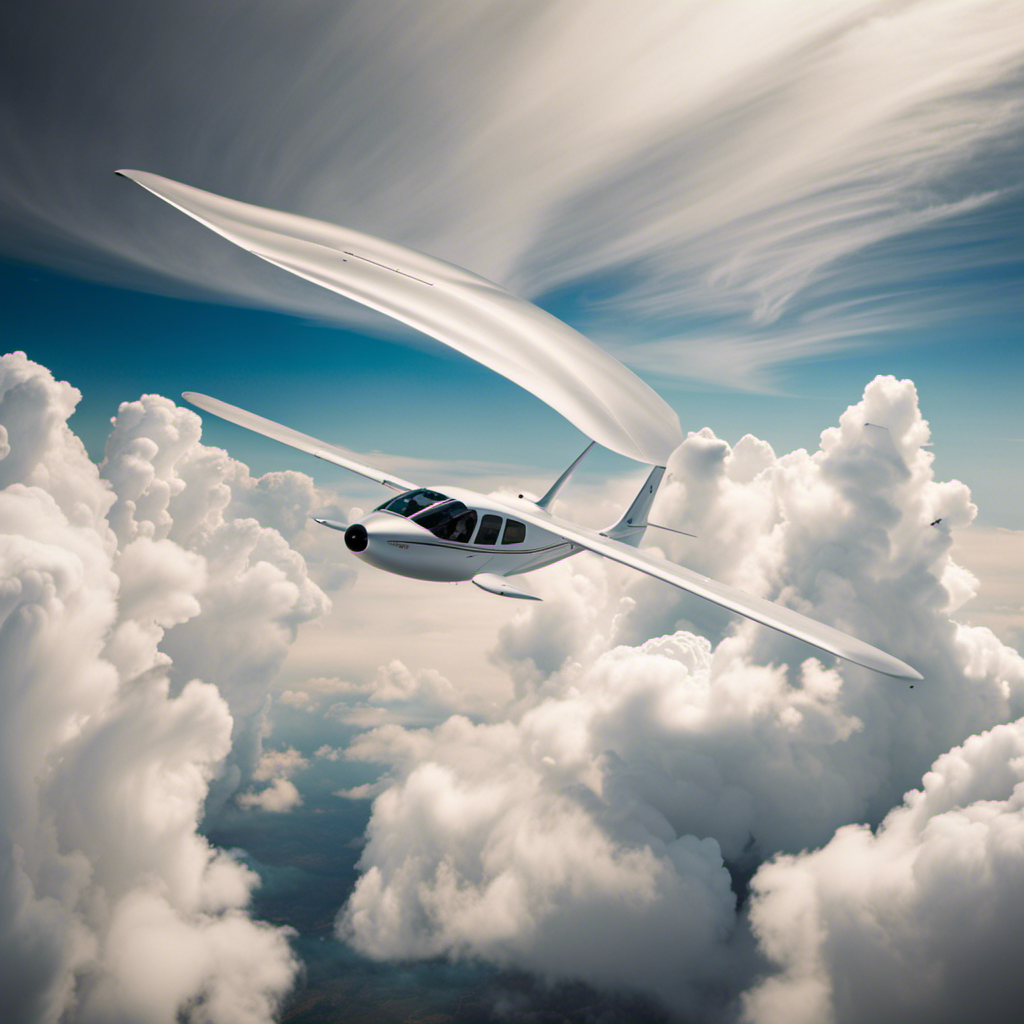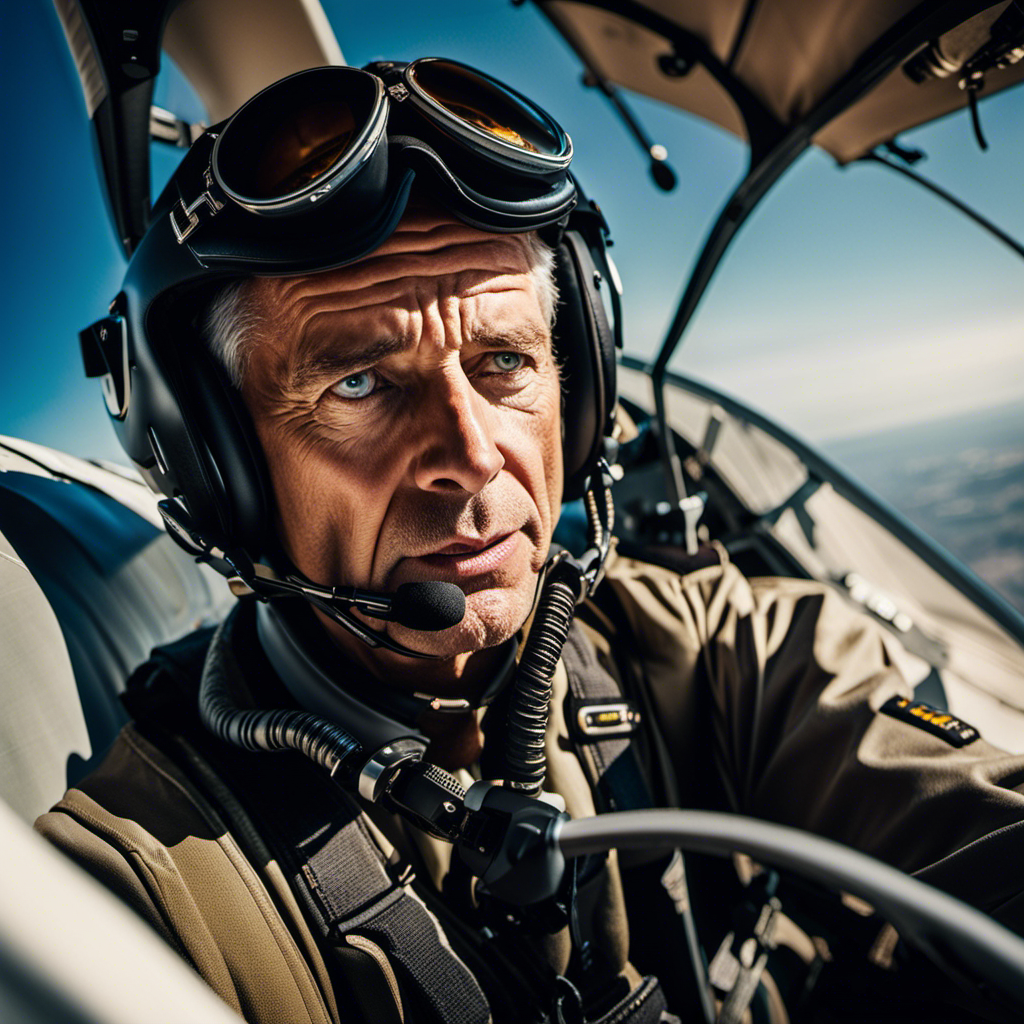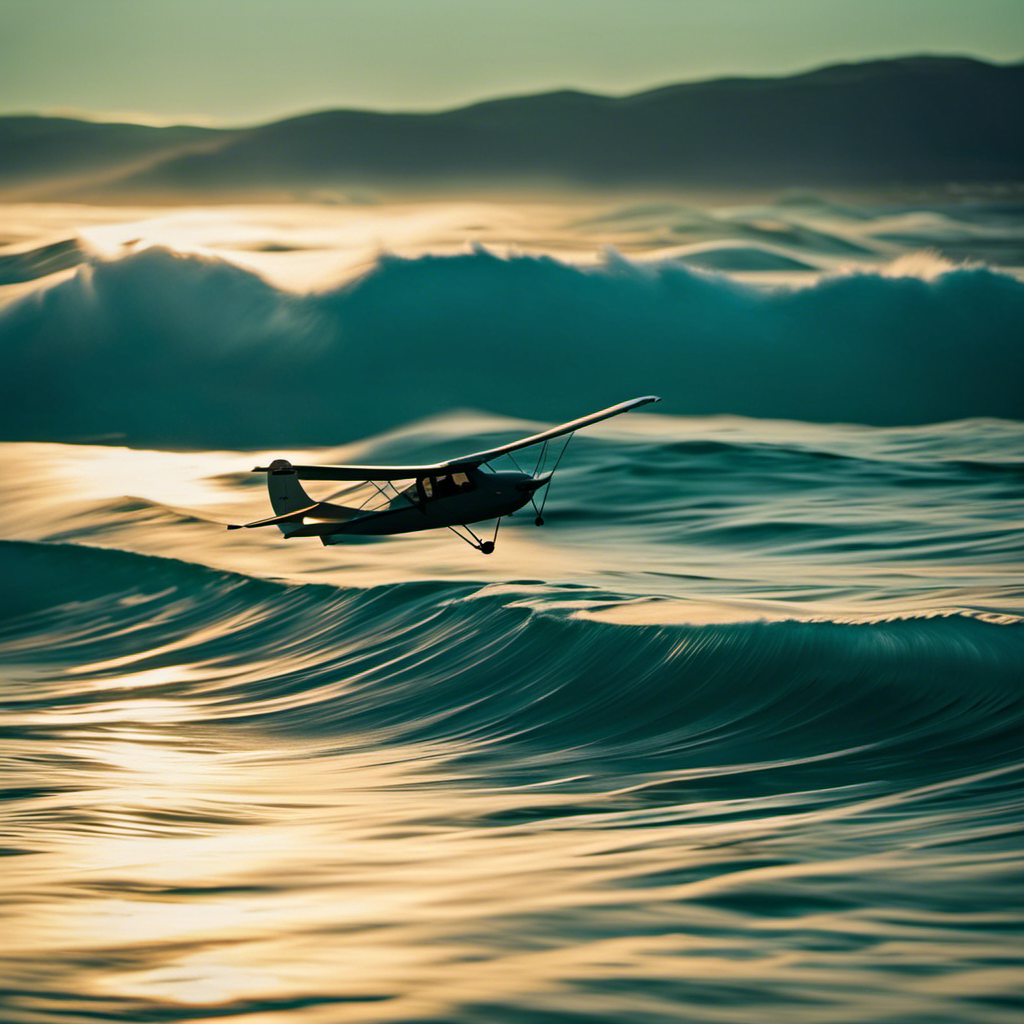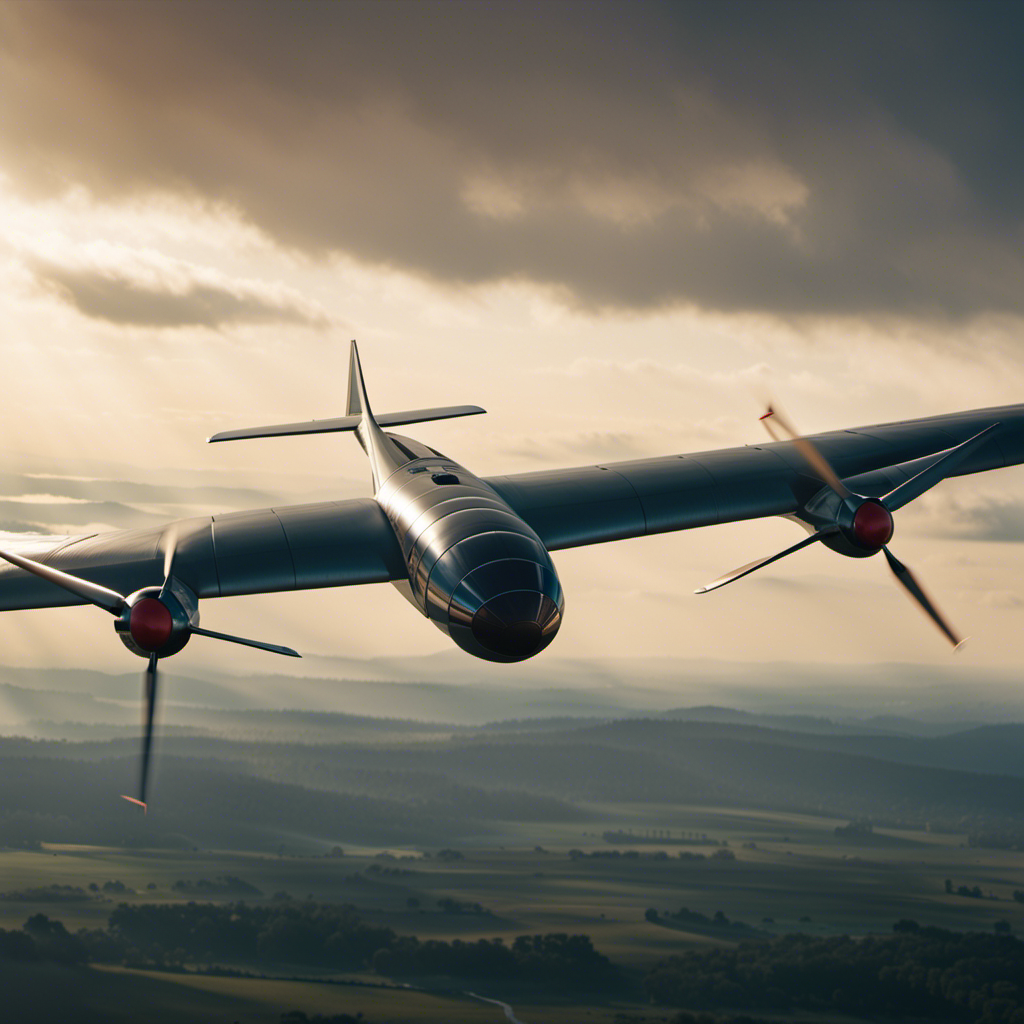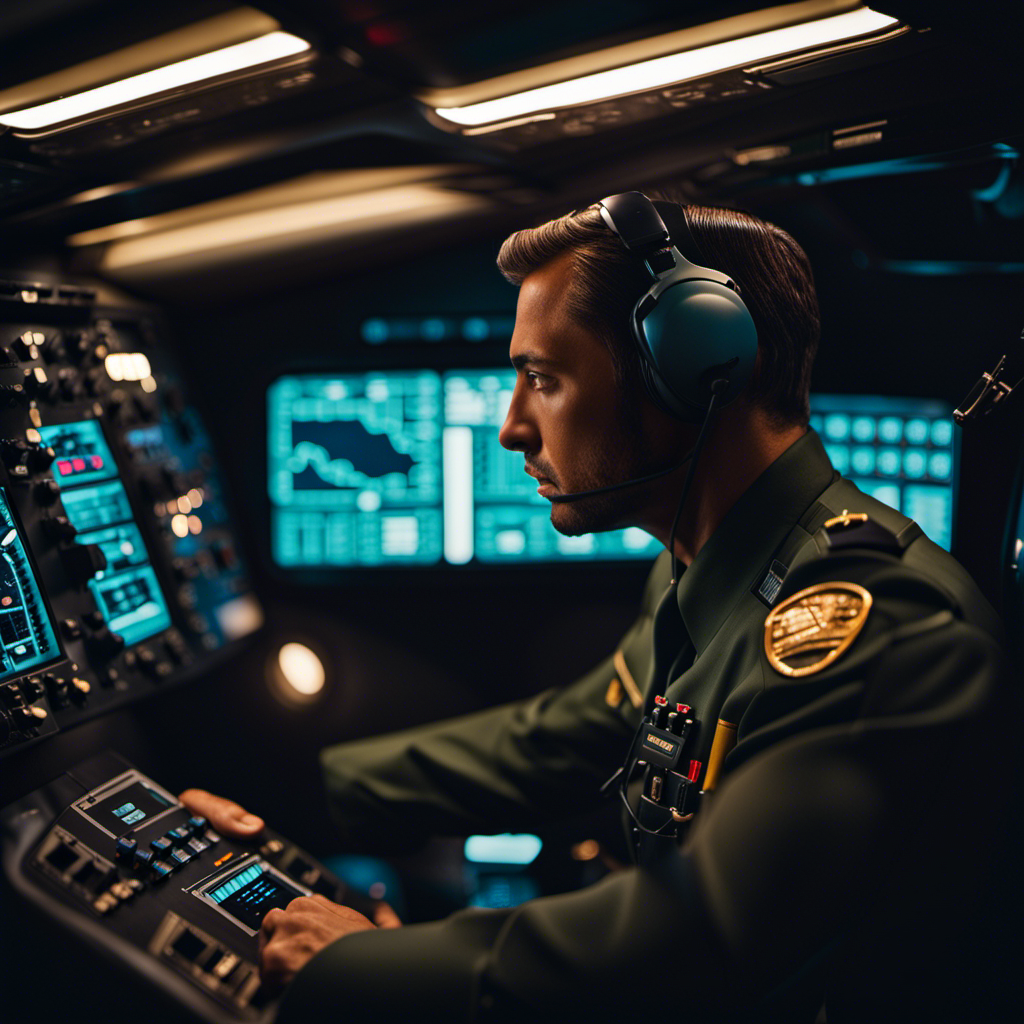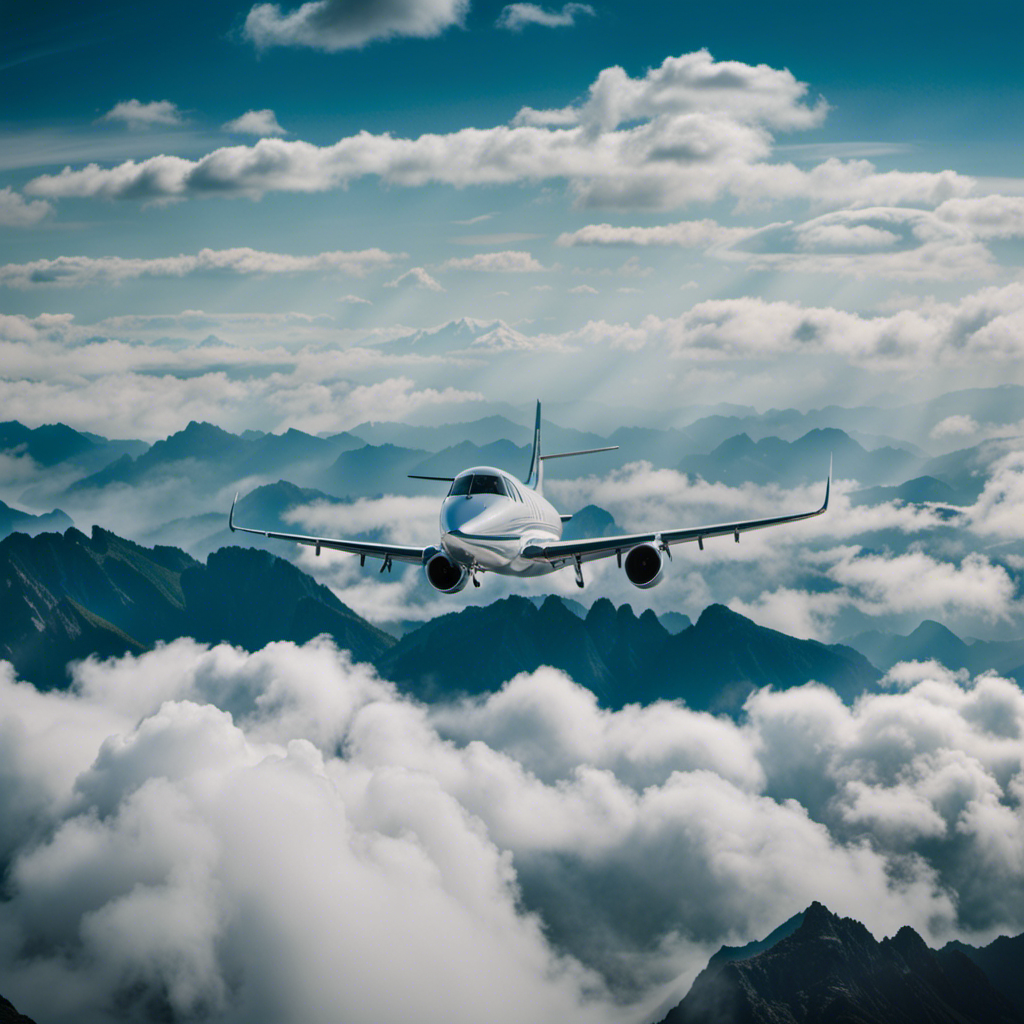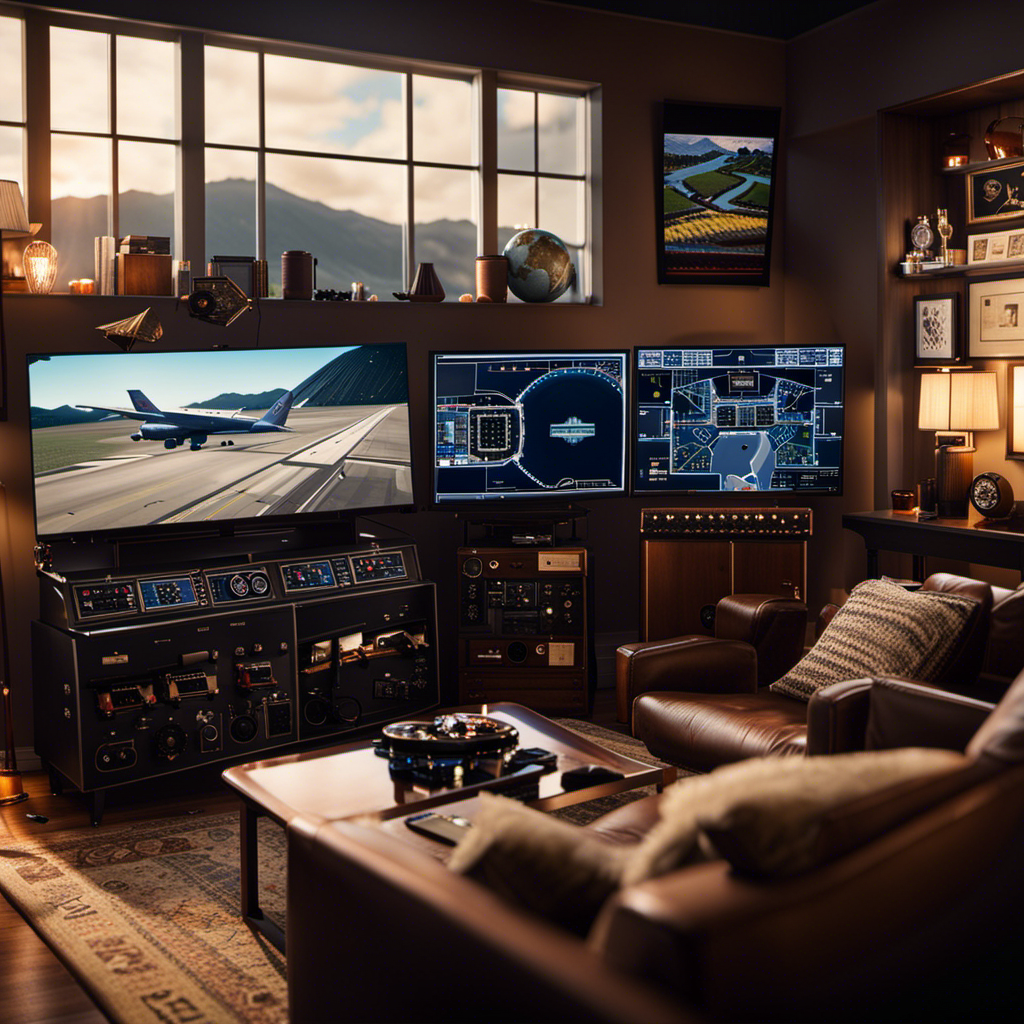Many people say “the sky is the limit,” but for us glider pilots, the sky is where our passion truly takes flight.
In this article, I will delve into the intricacies of how gliders fly, shedding light on the fundamental principles of lift and drag, the significance of airfoil shape, and the art of utilizing gravity and weight to maintain altitude.
Join me as we explore the technicalities, maneuvers, and sheer thrill of gliding through the skies with grace and precision.
Key Takeaways
- Glider flight techniques involve adjusting weight distribution for stability and maneuverability.
- Maneuvering techniques for turns include banking the glider, applying aileron and rudder inputs, and maintaining coordination.
- Maneuvering techniques for descents involve adjusting glide angle and rate of descent using elevator control and using full spoilers for rapid descent.
- Safety precautions and emergency procedures are essential for glider pilots, including constant communication, awareness of suitable landing areas, and familiarity with emergency systems.
Understanding the Basics of Lift and Drag
Understanding the basics of lift and drag is crucial in comprehending how gliders fly. In aircraft design, aerodynamic principles play a fundamental role.
Lift is the force that allows an aircraft to overcome gravity and stay in the air. It is generated by the interaction between the wings and the air, using the Bernoulli’s principle. As the air flows over the curved upper surface of the wing, it moves faster, creating a lower pressure and thus generating lift.
Drag, on the other hand, is the resistance encountered by an aircraft as it moves through the air. It is caused by factors such as air viscosity and the shape of the aircraft.
Understanding the relationship between lift and drag is essential in optimizing the performance of gliders.
Now, let’s delve into the role of airfoil shape in glider flight.
The Role of Airfoil Shape in Glider Flight
To really grasp how airfoil shape impacts your flight, you need to consider its role in generating lift and reducing drag. The role of air pressure and the impact of wing design are crucial factors in understanding how gliders fly. Here are four key points to consider:
-
Airfoil shape: The curved upper surface and flatter lower surface of the wing create a pressure difference, with lower pressure on the top and higher pressure on the bottom. This pressure differential generates lift.
-
Angle of attack: The angle at which the wing meets the oncoming air affects the lift and drag forces. By adjusting the angle of attack, pilots can control the amount of lift generated.
-
Aspect ratio: The ratio of the wing’s length to its average chord determines its efficiency. Wings with higher aspect ratios produce less drag and more lift.
-
Wing taper and sweep: Tapered and swept-back wings reduce drag by minimizing the formation of wingtip vortices.
Understanding the role of airfoil shape and wing design is essential in harnessing gravity and weight to maintain altitude, as we will discuss in the next section.
Utilizing Gravity and Weight to Maintain Altitude
By manipulating gravity and weight, pilots can effectively maintain altitude during flight. In glider aviation, understanding the interplay between gravity, lift, weight, and altitude is crucial.
Gravity, as a force pulling downwards, must be balanced by lift, which acts in the opposite direction. To maintain altitude, pilots must generate enough lift to counteract the force of gravity. This can be achieved by adjusting the glider’s angle of attack and controlling its speed.
By increasing the angle of attack, the glider increases lift, allowing it to overcome the pull of gravity and maintain or gain altitude. Conversely, decreasing the angle of attack reduces lift, which may result in a descent.
Controlling the glide ratio and angle of attack are fundamental techniques that allow pilots to effectively manage altitude during glider flight. Transitioning to the subsequent section, let’s explore how these techniques impact glider performance.
Controlling Glide Ratio and Angle of Attack
To effectively manage your glider’s altitude, you’ll need to control both the glide ratio and angle of attack. Controlling speed plays a crucial role in maintaining stability during flight.
By adjusting the glide ratio, you can control the distance covered by the glider for a given change in altitude. Increasing the glide ratio allows for longer distances to be covered, while decreasing it allows for a steeper descent.
On the other hand, the angle of attack determines the lift generated by the glider’s wings. By adjusting the angle of attack, you can control the amount of lift and consequently the glider’s altitude.
Now that we have a solid foundation on controlling altitude, let’s explore the next step: harnessing thermals and updrafts for sustained flight.
Harnessing Thermals and Updrafts for Sustained Flight
Harnessing thermals and updrafts allows pilots to gain altitude and extend their flight time. By understanding the principles behind these natural phenomena, glider pilots can strategically exploit thermal currents and updrafts to maximize their flying experience.
Here are four key strategies for harnessing thermals and updrafts:
-
Identifying thermal sources: A skilled glider pilot will actively search for signs of thermal activity, such as cumulus clouds or rising columns of air near the ground.
-
Entering thermals: Once a thermal is located, the pilot will maneuver the glider to enter the thermal core, where the upward vertical movement is the strongest.
-
Circling within thermals: To gain maximum altitude, pilots will use coordinated turns to circle within the thermal, gradually climbing higher with each revolution.
-
Exploiting updrafts: In addition to thermals, glider pilots can also take advantage of updrafts created by features like hills, ridges, or windward slopes.
Understanding how to effectively harness thermals and exploit updrafts is essential for glider pilots to achieve sustained flight and optimize their performance. By mastering these techniques, pilots can seamlessly transition into exploring the effects of wind and weather on glider performance.
Exploring the Effects of Wind and Weather on Glider Performance
Understanding how wind and weather conditions impact glider performance is crucial for optimizing flight experiences.
The effects of wind on glider performance are significant. It can either aid or hinder the glider’s ability to maintain altitude and move efficiently through the air. When flying against a headwind, the glider experiences increased drag, requiring more energy to maintain speed. On the other hand, a tailwind can provide a boost, allowing the glider to cover more distance with less effort.
Additionally, weather conditions such as temperature, humidity, and air pressure can affect glider flight. Changes in temperature can create thermal updrafts, which glider pilots can use to gain altitude. Humidity and air pressure variations can also impact the glider’s lift and overall performance.
Understanding and adapting to these factors is essential for safe and successful glider flight.
Transitioning into the next section, weight distribution and balance play a crucial role in maximizing glider performance.
The Importance of Weight Distribution and Balance
Maintaining proper weight distribution and balance in a glider is essential for optimal performance. Weight distribution techniques play a crucial role in achieving optimal balance, which directly affects the control and maneuverability of the aircraft.
To achieve this balance, glider pilots must carefully distribute the weight of the glider and its occupants. This can be done by adjusting the position of the ballast, such as water or sandbags, within the glider. The goal is to ensure that the center of gravity remains within the specified limits for safe and efficient flight.
Maneuvering Techniques for Turns and Descents
When executing maneuvering techniques for turns and descents, I carefully coordinate my control inputs to ensure a smooth and controlled flight.
Turning techniques in gliders involve banking the aircraft by applying aileron inputs to lower one wing and raise the other. To initiate a turn, I smoothly apply rudder input in the direction of the desired turn, coordinating it with the aileron input. This prevents adverse yaw and helps maintain coordination.
For descents, I adjust the glide angle by using the elevator control to increase or decrease the aircraft’s pitch attitude. To descend rapidly, I apply full spoilers to increase drag.
Transitioning into the subsequent section about safety precautions and emergency procedures for glider pilots, it is crucial to understand these maneuvers thoroughly to enhance flight safety.
Safety Precautions and Emergency Procedures for Glider Pilots
As a glider pilot, it is crucial to understand the safety precautions and emergency procedures that can arise during a flight. In the event of an emergency, such as an engine failure or severe weather, pilots must be prepared to execute an emergency landing. This requires quick thinking and precise decision-making.
Maintaining constant communication with air traffic control or the glider club’s ground crew is essential to ensure a coordinated response to any emergency situation. Pilots must also be aware of the nearest suitable landing areas and have a thorough understanding of the glider’s emergency systems, such as the parachute deployment mechanism.
By diligently following these safety precautions and being well-versed in emergency procedures, glider pilots can mitigate potential risks and ensure a safe flying experience.
Transitioning into the subsequent section about the thrill and beauty of gliding, one cannot help but marvel at the unique perspective it provides on flying.
The Thrill and Beauty of Gliding: A Unique Perspective on Flying
Transitioning into the subsequent section, you’ll be amazed by the exhilaration and breathtaking views that gliding offers, providing a one-of-a-kind perspective on the world from above.
Gliding, also known as soaring, is the art of flying without an engine. It involves harnessing the natural forces of the atmosphere to stay aloft for extended periods of time.
Here are three reasons why gliding brings immense joy and a unique experience:
-
Freedom: Gliding allows you to break free from the constraints of traditional powered flight. You can soar through the air like a bird, feeling the wind beneath your wings and the pure exhilaration of being airborne.
-
Serenity: Gliding offers a serene and peaceful experience. Without the noise and vibrations of an engine, you can fully immerse yourself in the tranquility of the skies, appreciating the beauty of nature from a different perspective.
-
Connection: Gliding connects you with the elements in a profound way. You learn to read the air currents, understanding how to use them to your advantage. It becomes a delicate dance with nature, as you navigate the invisible highways in the sky.
Gliding truly is the art of soaring, where the joy of flight meets the beauty of the world around us.
Frequently Asked Questions
How long can a glider stay in the air without any external assistance?
A glider can stay in the air without any external assistance for a maximum endurance determined by glider technology. The length of time a glider can remain airborne depends on various factors such as weather conditions and the skill of the pilot.
What is the maximum altitude a glider can reach?
The maximum altitude a glider can reach is limited by factors such as air density, weather conditions, and glider endurance. It’s like climbing a mountain in a race against time.
Can a glider fly in turbulent weather conditions?
Yes, a glider can fly in turbulent weather conditions. However, it is essential to ensure proper glider maintenance and understand the effects of turbulence on glider aerodynamics to ensure safe and efficient flight.
How does the weight distribution affect the performance of a glider?
Weight distribution plays a crucial role in a glider’s performance. Properly distributing weight ensures optimal balance and stability. For example, a well-designed wing helps generate lift, while thermal lift helps gliders gain altitude without an engine.
Are there any specific safety regulations or certifications required to fly a glider?
To fly a glider, pilots must adhere to specific safety regulations and obtain pilot certification. These regulations ensure that pilots possess the necessary skills and knowledge to operate gliders safely, reducing the risk of accidents and promoting aviation safety.
Conclusion
As I bring my glider in for a smooth landing, I can’t help but marvel at the beauty of gliding through the sky.
The art of harnessing the power of lift and drag, controlling the glide ratio and angle of attack, and utilizing thermals and updrafts is truly a unique and exhilarating experience.
Gliding is like dancing with the wind, gracefully navigating the currents and soaring through the air like a bird.
It’s a thrilling adventure that offers a whole new perspective on the wonders of flight.
Orion, better known as “Jetstream,” is the voice that brings the stories of the skies to life. His fascination with aviation began at a young age, sparked by his father’s tales of flying and adventure. Orion’s journey into the world of gliding was serendipitous, and from the moment he took his first glider flight, he knew he had found his calling.
